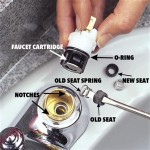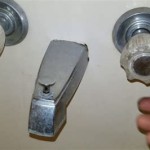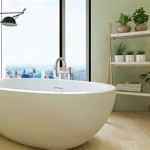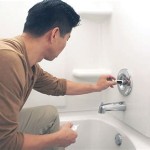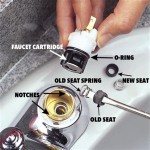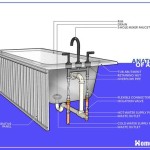```html
Wheelchair Accessible Bathtubs: A Comprehensive Guide
Maintaining independence and dignity are paramount for individuals with mobility limitations. Bathing, a seemingly simple daily task, can become challenging and potentially hazardous. Wheelchair accessible bathtubs offer a solution by providing a safer and more convenient bathing experience. These tubs are specifically designed to accommodate individuals who use wheelchairs or have difficulty stepping over high tub walls.
This article explores the various aspects of wheelchair accessible bathtubs, including their features, types, benefits, and considerations for selection and installation. The goal is to provide comprehensive information to assist individuals and their caregivers in making informed decisions about choosing the most suitable bathing solution.
Understanding the Features of Wheelchair Accessible Bathtubs
Wheelchair accessible bathtubs distinguish themselves from standard bathtubs through a range of specialized features designed to enhance safety and accessibility. These features often include:
Low Entry Threshold: One of the most crucial features is a low entry threshold or a zero-threshold entry. This allows a wheelchair user to easily transfer from their wheelchair to the bathtub seat with minimal effort and risk of tripping. Some models feature powered seats that lift and lower the bather into the tub, further reducing the need for physical exertion.
Wide Door: A wide, outward-swinging door is essential for wheelchair accessibility. The door is typically watertight when closed and allows for easy maneuvering of a wheelchair in and out of the bathing area. The door's latch mechanism must be easy to operate with limited hand dexterity.
Built-in Seat: Most wheelchair accessible bathtubs include a built-in seat, often contoured for comfort and support. The seat needs to be at a height that facilitates a comfortable transfer from a wheelchair. Some models offer adjustable seat heights to accommodate individual needs.
Grab Bars: Strategically placed grab bars are crucial for providing stability and support. These bars should be located at key points around the tub, such as near the seat and along the walls, to assist with transfers and maintaining balance.
Anti-Scald Valves: Safety is paramount, and anti-scald valves integrated into the faucet system prevent the water temperature from reaching dangerous levels, protecting the bather from burns.
Handheld Showerhead: A handheld showerhead provides flexibility and allows the bather to control the water flow and direction, making it easier to wash and rinse specific areas of the body.
Slip-Resistant Surfaces: The bathtub floor and seat are typically textured or coated with a slip-resistant material to minimize the risk of falls, especially when wet.
Types of Wheelchair Accessible Bathtubs
Wheelchair accessible bathtubs are available in various configurations to suit different needs and bathroom layouts. The most common types include:
Walk-In Tubs: Walk-in tubs are the most popular type of wheelchair accessible bathtub. These tubs feature a watertight door that allows the bather to enter the tub while standing or seated. The door is then closed, and the tub is filled with water. Walk-in tubs often include features like hydrotherapy jets and aromatherapy systems.
Roll-In Tubs: Roll-in tubs are designed to allow a wheelchair user to roll directly into the tub without having to transfer to a separate seat. These tubs have a wide, open entryway and a level floor that extends into the bathing area. Roll-in tubs typically require a larger bathroom space.
Transfer Tubs: Transfer tubs are designed with a side-entry door and a contoured seat that facilitates a safe and easy transfer from a wheelchair. These tubs are often smaller than walk-in or roll-in tubs, making them suitable for smaller bathrooms.
Soaker Tubs with Transfer Seats: These are standard bathtubs that have been modified with the addition of a transfer seat or lift. While not specifically designed as wheelchair accessible tubs, they can be adapted to provide a more accessible bathing experience. The transfer seat typically swivels and slides, allowing the bather to move from a wheelchair to the tub seat with relative ease.
Each type of wheelchair accessible bathtub offers unique advantages and disadvantages, and the best choice will depend on individual needs, bathroom size, and budget.
Benefits of Using Wheelchair Accessible Bathtubs
Wheelchair accessible bathtubs provide numerous benefits for individuals with mobility limitations, enhancing their quality of life and promoting independence. These benefits include:
Enhanced Safety: The primary benefit is increased safety. The low entry threshold, grab bars, and slip-resistant surfaces minimize the risk of falls and injuries during bathing. Anti-scald valves prevent burns, further enhancing safety.
Increased Independence: Wheelchair accessible bathtubs allow individuals to bathe independently, reducing the need for assistance from caregivers. This promotes a sense of dignity and self-esteem.
Improved Hygiene: Regular bathing is essential for maintaining personal hygiene and preventing skin infections. Wheelchair accessible bathtubs make it easier for individuals with mobility limitations to maintain their hygiene, improving their overall health and well-being.
Therapeutic Benefits: Many wheelchair accessible bathtubs include features like hydrotherapy jets and aromatherapy systems, which can provide therapeutic benefits such as pain relief, muscle relaxation, and improved circulation.
Reduced Caregiver Burden: By enabling independent bathing, wheelchair accessible bathtubs reduce the burden on caregivers, freeing up their time for other tasks and allowing them to focus on providing emotional support.
Increased Home Value: Installing a wheelchair accessible bathtub can increase the value of a home, making it more attractive to potential buyers who may have mobility limitations or are planning for aging in place.
Beyond these practical benefits, wheelchair accessible bathtubs can also contribute to a greater sense of well-being and improved mental health by providing a comfortable and relaxing bathing experience.
Key Considerations for Selection and Installation
Selecting and installing a wheelchair accessible bathtub requires careful consideration of various factors to ensure that the chosen model meets individual needs and fits seamlessly into the existing bathroom layout. These considerations include:
Individual Needs: Assess the individual's specific mobility limitations, height, weight, and comfort requirements. Consider whether they require a walk-in, roll-in, or transfer tub. Determine if they need additional features such as a power seat or hydrotherapy jets.
Bathroom Size and Layout: Measure the bathroom space carefully to ensure that the chosen bathtub will fit comfortably and allow for adequate maneuvering room for a wheelchair. Consider the location of existing plumbing and electrical connections.
Door Swing Direction: Consider the direction the door swings to ensure it does not obstruct access to other bathroom fixtures or create a safety hazard. Outward-swinging doors are generally preferred for wheelchair accessibility.
Water Heater Capacity: Wheelchair accessible bathtubs often require a larger volume of water than standard bathtubs. Ensure that the water heater has sufficient capacity to fill the tub adequately.
Professional Installation: It is highly recommended to hire a qualified plumber and contractor to install a wheelchair accessible bathtub. Proper installation is crucial for ensuring the tub's safety, functionality, and longevity. The installation process may involve modifying plumbing lines, electrical wiring, and the bathroom floor.
Cost: Wheelchair accessible bathtubs can range in price from a few thousand dollars to tens of thousands of dollars, depending on the features and complexity of the installation. Obtain quotes from multiple vendors and contractors to compare prices and ensure that the chosen option fits within the budget.
Warranty: Check the manufacturer's warranty on the bathtub and the installation workmanship. A comprehensive warranty provides peace of mind and protects against potential defects or malfunctions.
Local Codes and Regulations: Ensure that the installation complies with all local building codes and regulations, including accessibility requirements.
By carefully considering these factors, individuals and their caregivers can make an informed decision about choosing the most suitable wheelchair accessible bathtub and ensure a safe and comfortable bathing experience.
In summary, wheelchair accessible bathtubs represent a significant investment in the well-being and independence of individuals with mobility limitations. By carefully evaluating their needs and exploring the various options available, individuals can choose a bathing solution that enhances their quality of life and promotes dignity.
```
Wheelchair Bathtubs Handicap Tub Aging Safely Baths

Handicap Accessible Tubs Norm S Bargain Barn

Universal Tubs Nova Heated Wheelchair Accessible 4 5 Ft Walk In Air And Whirlpool Jetted Tub White With Chrome Trim H2953wclwdch The Home Depot

Wheelchair Transfer Bathtub 36 X55 Ellas Bubbles Walk In Tubs
Pelican Wheelchair Access Walk In Bathtub

Universal Tubs Nova Heated Wheelchair Accessible 5 Ft Walk In Whirlpool Bathtub White With Chrome Trim H3060wclwhch The Home Depot

Universal Tubs Nova Heated Wheelchair Accessible 4 5 Ft Walk In Air And Whirlpool Jetted Tub White With Chrome Trim H2953wclwdch The Home Depot

Wheelchair Transfer Bathtub 30 X60 Ellas Bubbles Walk In Tubs
Swan Walk In Handicap Spa Bathtub Free

Wheelchair Transfer Bathtub 26 X52 Ellas Bubbles Walk In Tubs
Related Posts

